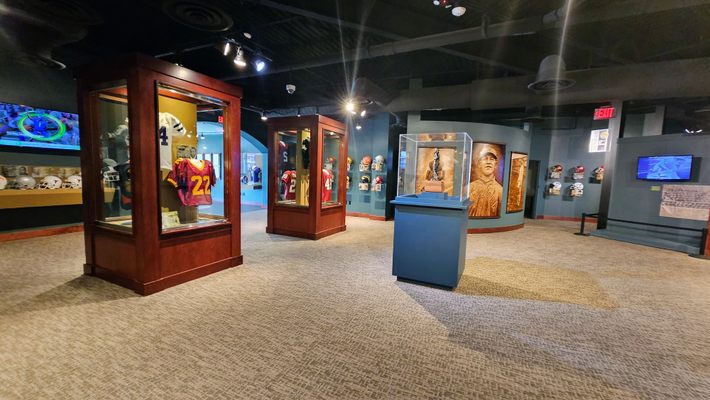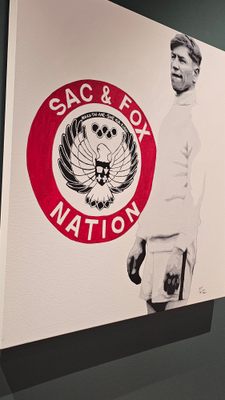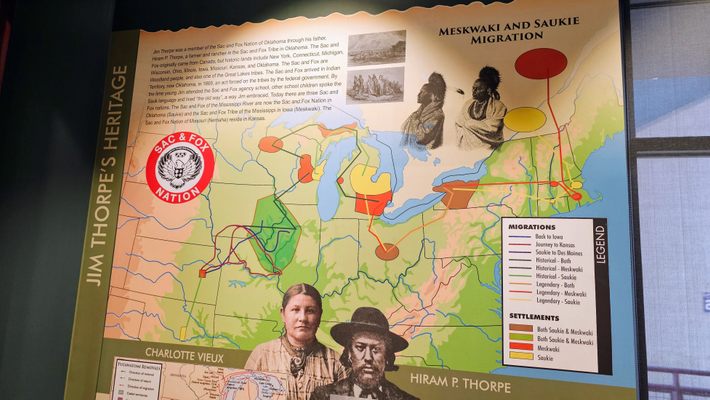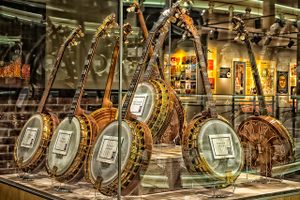About
Often considered one of the greatest athletes in American history, and the first Native American to win an Olympic gold medal for the U.S., Jim Thorpe’s life was streaked with moments of triumph and pain. Although his remains are buried far away, a small museum located in Oklahoma City, Oklahoma, near where he was born, honors his life today.
Jim Thorpe grew up as a member of Sac and Fox Nation, in what would later be known as Oklahoma. He was christened Jacobus Franciscus Thorpe, and his Native American name was Wa-Tho-Huk, meaning Bright Path. Jim faced a turbulent childhood in Oklahoma, frequently running away from home, and losing his brother and mother at a young age. He was sent to Carlisle Indian Industrial School, an assimilation boarding school in Pennsylvania. There, he met legendary football coach Glenn “Pop” Warner and his athletic career began in earnest.
Jim Thorpe was naturally gifted at nearly every sport he tried. He easily picked up lacrosse, hockey, and a variety of track-and-field events. He was talented at baseball, joining a professional minor league team while still in college. After joining the football team, he led Pop Warner’s team nearly singlehandedly to the national collegiate championship. He even won the Intercollegiate Ballroom Dancing Championship.
These honors followed him to the professional leagues, and he would eventually play in both Major League Baseball and the predecessor of the National Football League. His most famous achievement took place in the 1912 Summer Olympics, where he became the first (and still only) athlete to win both the pentathlon and the decathlon. However, due to his time in minor league baseball, he was stripped of these medals. The dismay and uproar reverberated throughout his life, as he and many others felt he was singled out for his fame and his race. The medals were restored in 2022.
Once his days as a professional athlete were in the past, Jim Thorpe struggled for the remainder of his life. He would pick up odd jobs, sometimes trading on his name, but suffered from alcoholism and infirmity. Frequently exploited and overly giving, he ran out of money, and upon his death, his wife sold his remains to the town of Mauch Chunk, Pennsylvania, which famously renamed itself “Jim Thorpe.”
Although his body lay elsewhere, many in Oklahoma still sought ways to honor him. In 1986, the Jim Thorpe Association established the Oklahoma Sports Hall of Fame to honor the heritage of Oklahoma athletes and the spirit and legacy of Jim Thorpe. Today, the Jim Thorpe Museum exists as a room within the larger Hall of Fame. Both museums are in turn located within the local minor league stadium. The museum includes memorabilia from Jim Thorpe’s life and career, as well as an exploration of his family’s history and his Native American heritage. Outside, a larger-than-life statue stands in his honor.
Related Tags
Know Before You Go
The Jim Thorpe Museum is located within the Oklahoma Sports Hall of Fame. Both are free and open to the public from 10 a.m. to 5 p.m.. Museum hours are not extended for baseball games, so plan accordingly.
Community Contributors
Added By
Published
January 29, 2024




























